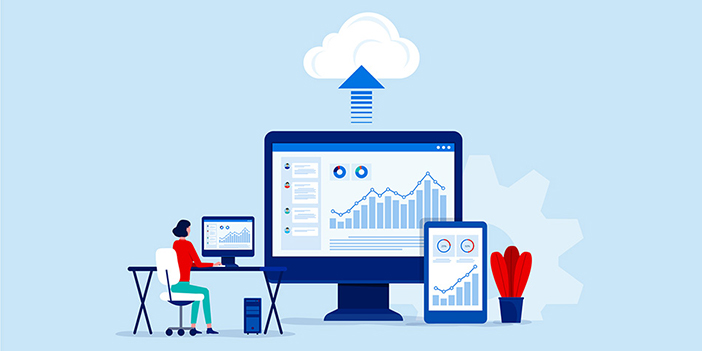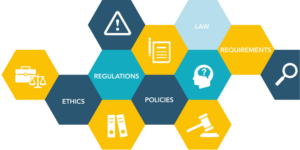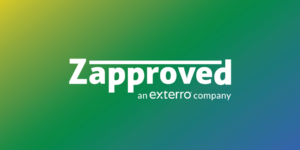
Should your organization’s ediscovery software move to the cloud?
The answer isn’t so simple. While there are an increasing number of ediscovery software options that are cloud-based, there’s still no one-size-fits-all answer. Let’s evaluate the factors that influence whether on-premise or on-demand is the right option for your organization.
Setting the Stage: The Origins of On-Premise Ediscovery
In the early days of ediscovery software, there was no cloud! Initial software packages were all locally installed at a company’s physical location Some were buildouts of existing litigation management systems, while others offered dedicated ediscovery tools. As cloud computing has grown in popularity — and in reliability and security — the ediscovery software industry has largely converted to the cloud, though on-premise systems retain a small, dedicated following.
On-premise applications fall into two major categories: legacy review systems like Concordance and Summation and modern ediscovery packages like Relativity (also available in a cloud-based version). These systems are installed entirely in house, which means that the company’s IT team is responsible for not only the software but also all of the supporting hardware, system security, maintenance, and upgrades.
Cloud-based software — also generally known as on-demand or software-as-a-service (SaaS) applications, such as ZDiscovery — is, of course, hosted in the cloud. These applications can draw from a vendor’s entire computer network, allowing users to access a tremendous amount of storage space and processing power when needed. Security, maintenance, and upgrades are all handled by the vendor, not the organization.
Considerations and Differences Between Cloud Based Ediscovery and On-Premise
Costs and Budgets
Perhaps the biggest difference between on-premise and cloud-based ediscovery software options is the overall cost. As noted, on-premise applications require an upfront capital investment for the software and any required hardware, such as servers and backup hard drives. Nor are these costs limited to computer systems: organizations must provide the physical space and supportive infrastructure, such as heating and cooling capacity and backup power systems.
Bear in mind that these costs aren’t all one-and-done; on-premise systems also generate ongoing expenses. Not only do they require dedicated operating staff and IT support, but the physical space and infrastructure are also continuous costs, as are system maintenance, upgrades, repair, and eventual component replacement.
On-demand Saas ediscovery software is generally subscription based, where users pay as they go. In this model, users pay for additional services only as they use them. Costs are more transparent with cloud software, as there aren’t hidden expenses for dedicated staff or infrastructure. Subscription fees are typically treated as operating, rather than capital, expenditures.
Storage Capacity and Processing Power
For both total storage capacity and system speed or processing ability, on-premise systems are finite and predetermined. This demands an accurate assessment of your organization’s needs prior to installation, as you’ll pay for the full capacity regardless of what percentage of it you use. If, on the other hand, your needs outstrip your capacity, you can either expand your system, incurring another large capital expense, or reduce or outsource your work to stay within your system’s limits.
In contrast, cloud-based systems are “elastic,” or infinitely scalable, because they draw on the vendor’s entire online network. Additional storage and processing power are available when needed but only paid for when used. This flexible scalability is a boon for organizations with unpredictable ediscovery needs and limited budgets.
Security for Cloud Based Ediscovery v. On-Premise

For control enthusiasts, on-premise applications promise security that is as good as your enterprise system’s security. Your organization’s firewall protects this software; so long as you use best-in-class security measures, your ediscovery data is likely safe from breaches.
Cloud-based systems are on the internet, so there’s a perception that they are more at risk of a security breach. However, vendors are highly motivated to shore up their security and have extensive resources, thanks to economies of scale, to devote to heightened security measures. SOC 2® Type 2 certified status is considered the highest possible data security rating. Additionally, cloud-based systems are often geographically redundant, providing a measure of insurance against natural disasters.
System Accessibility and Remote Work
Depending on the configuration of the enterprise’s firewall, on-premise systems are likely to be available only on the organization’s physical premises. This limits their flexibility for remote working options or global access during business travel and can impede cross-office ediscovery for organizations with multiple office locations. These systems are also subject to power outages and natural disasters such as floods and fires. Additionally, on-premise systems must be maintained and updated by the organization itself, which can cause substantial system downtime (and impose an ongoing hidden cost).
Because they’re hosted on distributed cloud networks, on-demand software options are available from anywhere with an internet connection (and from any operating platform). These cloud-based systems are insulated from system downtime due to power outages or system overloads. Additionally, because the vendor manages all software updates and upgrades, cloud-based software is always up to date with minimal or no system downtime or user interruption.
Customization
Whereas cloud-based systems are generally non-customizable, some ediscovery on-premise systems offer specifically tailored services (at a price, of course). Large organizations with unique needs may prefer a custom application precisely suited to their circumstances. Be careful, however, that whatever system you set up passes muster with the courts: a custom application or functionality may lack the name recognition and reputation of a major platform.
Customer Support and Speed to Implementation
Both on-premise and on-demand ediscovery software from best-in-class vendors tend to be accompanied by excellent customer support. But it’s worth evaluating how often customers need to access that support. Legacy systems are notoriously clunky and difficult to learn or operate, requiring significant training or even certification to use. While modern ediscovery applications, both on-premise and cloud-based, tend to be intuitive and easy to master, you don’t want to choose a vendor that isn’t accessible. If you can’t start to learn the software during a product demonstration, it might not be the right choice.
Beyond time to mastery, consider also the speed to implementation. On-premise systems can take six months to a year — as a conservative estimate — to install, troubleshoot, integrate, and launch, whereas on-demand software can be up and running within just days.
The Untenable Third Option for Ediscovery
Some organizations choose a third option, foregoing either on-premise or cloud-based ediscovery software in favor of a manual process for preservation, collection, and even later stages. Unless your volume of ediscovery is extremely low, don’t be tempted. Yes, you might save on software, but you’ll outspend that savings in lost efficiency, wasted employee time, and increased risk of spoliation sanctions.
In this era of continuous business consolidation, a merger or acquisition could represent an excellent opportunity to upgrade, combine, or change your ediscovery software. Take stock of the systems that the various players in your newly expanded company use to determine which application will work best for the new whole.
We can’t tell you which option to choose, but with some investigation, you’ll know the approach that’s best for your organization.
Bottom Line: Cloud v. On-Prem Ediscovery
Whether your company would do best with an on-premise or cloud-based ediscovery system is an individual decision that depends on your specific circumstances. Companies that have outstanding enterprise security measures and robust IT departments and that are embroiled in continuous, fairly predictable litigation might do well to manage their ediscovery systems through an on-premise installation. Globally distributed organizations or those that allow remote employment and that have a lower-volume, variable ediscovery case load may prefer the lower cost, greater convenience, and “one-stop shopping” that on-demand ediscovery software allows.
Give careful thought to which camp you fall into. This decision is best made with a team from the legal, finance, and IT departments. Work together to evaluate your options and price out all of the up-front, ongoing, and hidden costs. Not only will you get more complete and accurate information if you start with everyone at the table, but your credibility and buy-in with corporate management will be immediately enhanced if your departments present a unified front.
If you have an on-premise system now, carefully evaluate whether it’s still working for your company and if it is designed for your future ediscovery challenges, like rising data volumes and new data sources. Many organizations have retained their on-premise systems either out of habit or because those systems are already in place, integrated with their other systems, and working tolerably well. If you’re dissatisfied with your on-premise software but think you should stick with it anyway, be careful that you’re not operating on a sunk cost fallacy. Just because you’ve invested in your on-premise system in the past is not a reason to continue using that system if it no longer meets your needs.
| On-Premise Software | Cloud-Based Software | |
| Cost | $$$ | $ – $$ |
| Budget | capital + operating | operating |
| Scalable Capacity | ★ | ★★★ |
| Security | ★ – ★★★ | ★★ – ★★★ |
| Availability | ★ – ★★ | ★★★ |
| Customizability | ★★★ | ★ |
| Commitment | required | optional |
| Speed to Implementation | months to years | weeks |




